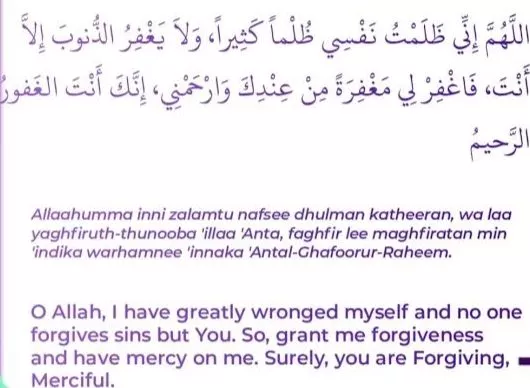Updated: July 23, 2024 by admin
Muslims pray the “Dua after Tashahhud” following the Tashahhud recitation. It follows the Tashahhud, when Muslims testify to the unity of Allah, and is an essential component of the prayer.
This prayerful request allows worshippers to connect more deeply with their religion and the Almighty while asking for forgiveness, guidance, and blessings.
This introduction article goes into the meaning and power of a great tashahhud ki dua that is near to the hearts of Muslims everywhere.
Table of Contents
Can You Make Dua after Tashahhud?

In this article, we’re going to go deeper into the topic and examine the proper methods to perform Dua after Tashahhud:
Tashahhud Lighting
A statement of religion, the Tashahhud reaffirms Allah as the only God and Muhammad (peace be upon him) as the final and final Prophet. This part of the Salah is characterized by deep reflection, during which the worshipper invokes Allah’s peace and blessings upon the Prophet.
The Significance of Dua in Islam
As an essential concept of Islam, it shows the believer’s dependency on and trust in Allah’s favor and strength. Numerous verses in the Quran and sayings of the Prophet Muhammad (peace be upon him) may be found in the Quran and Hadith that highlight the importance of Dua. By promising benefits, guidance, or even better in this world or the Hereafter in response to their prayers, Allah asks believers to call upon Him.
After Tashahhud, is it allowed to pray?
Many Muslims wonder if they are allowed to pray after Tashahhud. After finishing the Tashahhud in salam, it is permitted to make dua after tashahhud before salam. While Muslims do pause during prayer to pray for the Prophet Muhammad (peace be upon him), they are free to make extra personal prayers outside of the Tashahhud.In truth, the Tashahhud is just one of many occasions and places where the Prophet Muhammad (peace be upon him) urged followers to say, Dua.
Prayer Practices in Islam:
Dua can be made after Tashahhud; however, it’s important to remember Islamic prayer respect. Here are some suggestions for how to pray with greater success:
- First, give thanks. Encouragements to Allah and peace be upon the Prophet Muhammad (may he rest in peace) should open things up.
- Practice true modesty by coming to Dua with an awareness of your need for Allah’s grace and direction.
- Be specific and direct in your requests for blessings, advice, or forgiveness.
- Repeat your plea: The Prophet Muhammad (peace be upon him) said that Dua is most effective when recited three times.
- Worship Allah by His beautiful name. Use Allah’s name to call attention to who He is and what He’s like.
- Show patience and appreciation. Have faith that Allah will answer your prayers in His own time and in His way.
Dua after Tashahhud Islamqa

When praying the additional component (rak’ah) of the Islamic prayer, after reciting the Tashahhud (the proof of trust), it is advised to make the following prayer (dua after attahiyat):
“Allahumma salli ‘ala Muhammadin wa ‘ala aali Muhammadin kama sallaita ‘ala Ibraheema wa ‘ala aali Ibraheema innaka Hameedun Majeed.
To God be the honor, Muhammad and his followers have been told to say,
“Allahumma baarik ‘ala Muhammadin wa ‘ala aali Muhammadin kama baarakta ‘ala Ibraheema wa ‘ala aali Ibraheema innaka Hameedun Majeed.”
You are surely full of praise and glory; put blessings upon Muhammad and the family of Muhammad as You sent blessings upon Ibrahim and onto the family of Ibrahim. O Allah, just as You blessed Ibrahim and his family, so do I pray that You bless Muhammad and his family. You are deserving of praise and glory.
Dua after Tashahhud in Namaz

It is widely used to recite a certain dua after the Tashahhud in the prayer (salah). Common duas said after Tashahhud include:
This is the prayer of Hamidun Majeed:
“Allahumma salli ‘ala Muhammadin wa ‘ala ali Muhammadin kama sallaita ‘ala Ibrahima wa ‘ala ali Ibrahima innaka Hamidun Majeed”
Allahu akbar, peace be upon Muhammad and his family; blessings and peace be upon Ibrahim and his family, and peace be upon Hamid the Great.
“O Allah, bless Muhammad and his family with Your peace and blessings, just as You blessed Ibrahim and his family with Your peace and blessings. Indeed, You are deserving of praise; you are beautiful. Allah, please bless Muhammad and his family the same way you blessed Ibrahim and his family. You deserve praise because you are great.”
After Tashahhud Dua

“Tashahhud” is an important part of Islamic prayers that shows fear and submission to Allah. The “After Tashahhud Dua” is a private prayer that Muslims may say after they say the Tashahhud.
- Finding out what Tashahhud means:
Tashahhud is a prayer that good Muslims say out loud. It is proof that Muhammad (peace be upon him) was a prophet and that Allah is the only God. The Tashahhud is a sign of one of the most important parts of the Islamic faith. It shows that you accept Allah’s power and trust in His will.
- The Tashahhud prayer’s purpose after it’s done:
The After Tashahhud Dua, which is sometimes called “Dua Qunoot,” is said after the Tashahhud but before the prayer is over. The goal of this dua is to ask Allah for help, direction, and forgiveness on behalf of oneself and other Muslims.
The Dua after Tashahhud is not needed in every prayer, but it is highly encouraged, especially in hard times or when asking God for help.
- The Effect of Human Contact:
The After Tashahhud Dua is notable because it allows Muslims to have a close and personal relationship with God. The Tashahhud Dua allows individuals to speak to their Creator in their own words, feelings, and desires, compared to the Tashahhud, which is performed collectively in a standardized style. This one-on-one communication furthers the image of Allah as a compassionate and forgiving God, always responsive to the requests of His faithful followers.
- When to Pray the Dua:
There are several different contexts in which Muslims may recite the After Tashahhud Dua. It can be repeated when one needs help deciding on a major course of action, when one is sick, or when one wants to beg for the blessings of others.
- Collective Harmony and Support:
On certain occasions or in reaction to specific global events affecting the Muslim Ummah, the After Tashahhud Dua is performed collectively in some Muslim communities.
FAQs
Ans: In the second and last stanzas (rak’ahs) of every prayer, the Dua occurs following the Tashahhud.
Ans: No, raising the hands during this specific Dua is not a prescribed practice in the Sunnah (traditions) of the Prophet Muhammad (peace be upon him).
Ans: The real Duas told by the Prophet Muhammad (peace be upon him) following Tashahhud should be used as a starting point, but you are free to add your own Duas if you feel the need.
Ans: Yes, you can make the Dua in your native language, especially if you don’t know the Arabic supplications or recite the Arabic.
Conclusion
In conclusion, the “dua after tashahhud” is a very important and difficult prayer in Islam. It comes after the Tashahhud and is said while sitting before the final thanks at the end of the prayer. Muslims can get closer to Allah by praying this dua and asking for His favor, knowledge, and forgiveness. Believers can find comfort, strength, and spiritual growth on their way to a closer relationship with the Divine if they understand the meaning of this prayer and include it in their normal worship.

